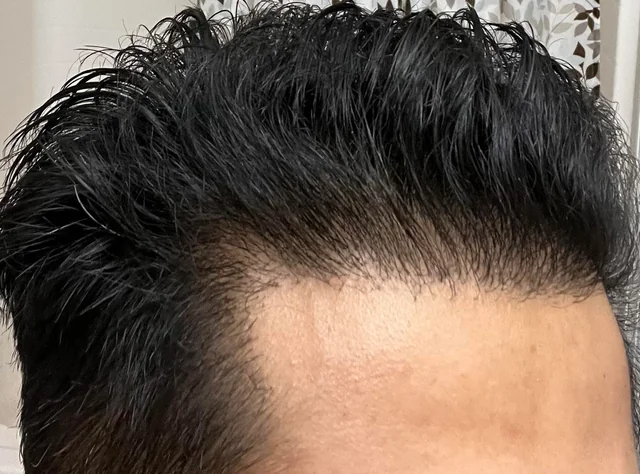Post Hair Transplant Care: What Every Patient Must Know

Undergoing a hair transplant is a great step towards restoring not best your hairline but additionally your confidence. Whether you've opted for FUE, FUT, or DHI, the manner marks simplest the start of your journey. The real consequences lie in how properly you take care of your scalp and newly implanted grafts inside the days, weeks, and months that observe. In this guide, we’ll cowl the entirety each affected person should recognize about post hair transplant care—from immediate aftercare to lengthy-time period conduct that hold your investment.
1. First 24–72 Hours: Protecting the FoundationThe first seventy two hours after your hair transplant are crucial. During this time, the implanted grafts are sensitive and want a strong, undisturbed surroundings to root well.
Do:Sleep along with your head accelerated (at a forty five-diploma perspective) the use of more than one pillows or a recliner. This facilitates reduce swelling.
Avoid touching, scratching, or rubbing the dealt with area.
Use a neck pillow to keep away from unintended touch with pillows during sleep.
Follow any prescribed medications like antibiotics or anti-inflammatories exactly as directed.
Don’t:Wash your hair until your health care professional advises it.
Engage in physical hobby or exercise that causes sweating.
Wear tight hats, helmets, or whatever that might press at the grafts.
Drink alcohol or smoke—these can hinder recovery and reduce blood drift to the scalp.
2. Washing Your Hair: Timing and TechniqueBy the third day, most patients are cautioned to gently wash their scalp. This helps get rid of dried blood, lessen scabbing, and keep the scalp smooth.
How to Wash Post-Transplant:Apply a gentle lotion or moisturizer (if recommended through your physician) to the scalp to melt scabs.
Rinse cautiously with lukewarm water—keep away from direct water stress.
Use a mild, pH-balanced or toddler shampoo. Lather it on your fingers and lightly dab it onto the recipient vicinity.
Pat dry best with a tender towel or let it air dry.
This routine is commonly endured for 7–10 days until scabs fall off certainly. Never pick out at scabs—doing so can harm grafts or result in contamination.
3. Managing Normal Post-Surgery EffectsIt’s everyday to enjoy certain aspect consequences post-surgical procedure. Understanding what’s standard and what’s now not let you stay calm and responsive.
Common and Temporary:Swelling across the forehead or eyes, particularly days 2–four
Redness and mild irritation within the recipient or donor area
Itching, frequently a signal of recuperation
Shock loss – dropping of transplanted or current hair, generally 2–4 weeks after surgical treatment
When to Call Your Doctor:Signs of contamination (fever, pus, immoderate redness or warmth)
Persistent or worsening ache
Excessive bleeding
4. The Growth Timeline: Patience is KeyMany patients fear while transplanted hairs start to fall out. This is absolutely everyday and a part of the technique.
What to Expect:Weeks 1–four: Scabbing and initial dropping of transplanted hairs
Months 1–3: Shock loss segment, wherein grafts are dormant
Months 3–6: New hair growth starts—great and light before everything
Months 6–9: Hair thickens and grows faster
Months 9–12+: Final outcomes begin to show, with fuller density and natural look
5. Lifestyle and Diet: Supporting Hair RecoveryYour body desires the right nutrients and behavior to make certain strong and healthful hair increase.
Nutrition Tips:Eat protein-wealthy meals (hen, eggs, legumes)
Include biotin, iron, zinc, and nutrition D for your weight loss program
Stay hydrated—drink masses of water each day
Avoid alcohol and tobacco during the recuperation segment
Ask your medical professional if they endorse hair dietary supplements or topical remedies like minoxidil or PRP therapy to assist boom.
6. Activities to Avoid within the First MonthYour scalp desires rest. Avoid sports that hazard detrimental your grafts or causing trauma.
Steer Clear Of:Heavy workout, gymnasium workouts, and strolling for 10–14 days
Swimming in swimming pools, warm tubs, or oceans for as a minimum three–four weeks
Hair coloring, perming, or chemical treatments for three–6 months
Direct sunlight or tanning beds—put on a free, breathable hat if vital
Saunas and steam rooms, which could reason sweating and swelling
7. Resuming Your Normal Hair RoutineAfter about 2 weeks (or as counseled by using your medical doctor), you may slowly return in your ordinary grooming habits—brushing, combing, and mild styling. But:
Always be mild.
Avoid heat styling or aggressive brushing.
Choose sulfate-loose and paraben-free shampoos for lengthy-time period hair fitness.
8. Follow-Up Appointments: Monitor ProgressAttending scheduled publish-op appointments is vital. Your physician will examine:
Healing of the recipient and donor areas
Hair regrowth fee and sample
Any signs and symptoms of complications or infections
The need for supportive remedies or medicinal drugs
Don’t hesitate to invite questions or document uncommon signs at these take a look at-ins.
Conclusion: Success Lies in AftercareA successful hair transplant doesn’t quit on the surgical procedure desk—it continues via weeks and months of considerate, disciplined aftercare. By following your healthcare professional’s instructions, preserving a healthy way of life, and giving your scalp the time it wishes to heal, you’ll set the foundation for natural-looking, long-lasting hair recovery.
Your grafts are an funding. With the proper care, they’ll flourish—and so will your confidence.
